I have a bottle of wine that isn’t my favourite so decided I’d try to make vinegar from it as a fun experiment. Started on March 28/22.
The easiest method of making vinegar from wine is by using unpasteurized apple cider vinegar which has the mother in it. Apparently it is Acetobacteraceae that metabolizes alcohol into acetic acid in an aerobic reaction. If one uses unpasteurized apple cider vinegar the mother should be alive and well. By adding this to the wine the Acetobacteraceae will convert the ethanol into acetic acid.
I read a bunch of blogs that said you must use sulfite free wine. The problem is that sulfites are apparently a natural part of the wine production even when they aren’t added to the wine so there isn’t really sulfite free wines. However, using a wine low in sulfites, one to which no sulfites were added is apparently beneficial.
Another factor is the alcohol content of the wine, if it is much above 8% then adding the mother to the wine may not work because over 8% the acetobacteraceae may not be able to function. Since most wines are higher than 8% what one can do is blend the apple cider vinegar to the wine in a ratio that ensures that the alcohol is no higher than 8%.
So with in mind I mixed the wine and the apple cider vinegar in a 1:1 ratio in two mason jars. In order to provide the aerobic environment I placed medical gauze over the tops of each jar and then secured it with the lid without the center in place so the wine/vinegar could breathe. This seems to be working because there is now a layer at the top of the liquid which I assume is the new growing mother and the mixture is starting to smell really good of vinegar.
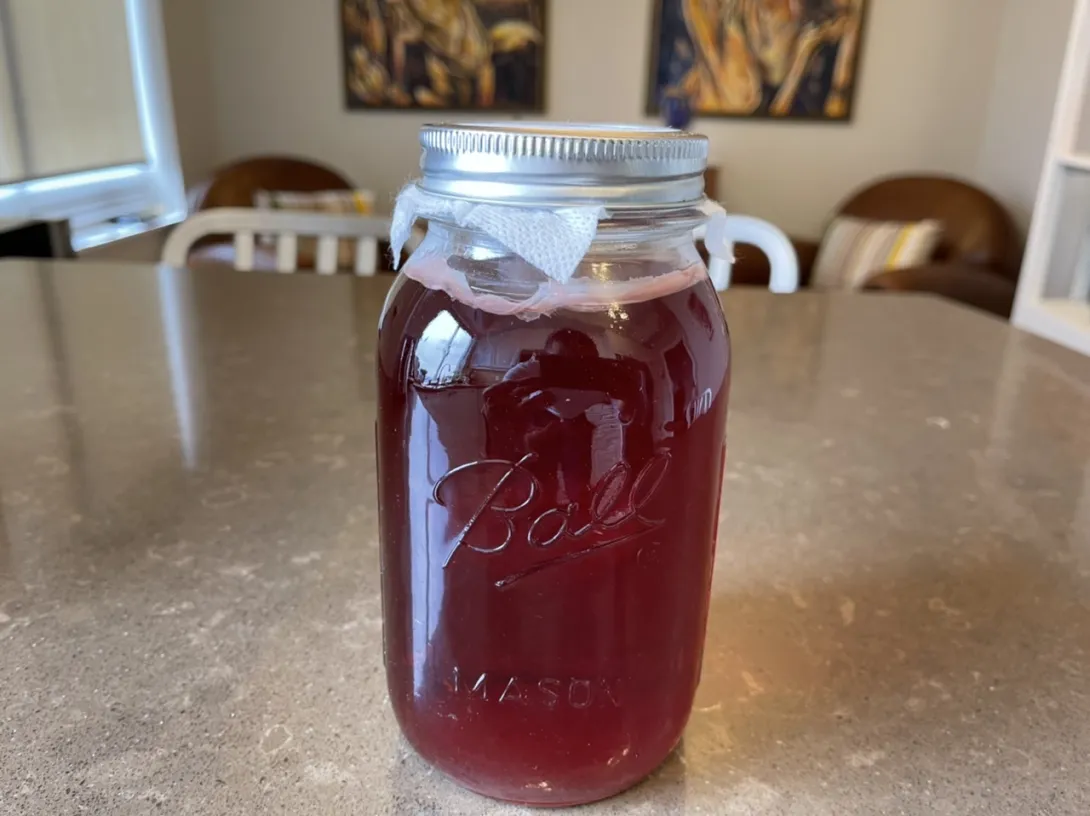
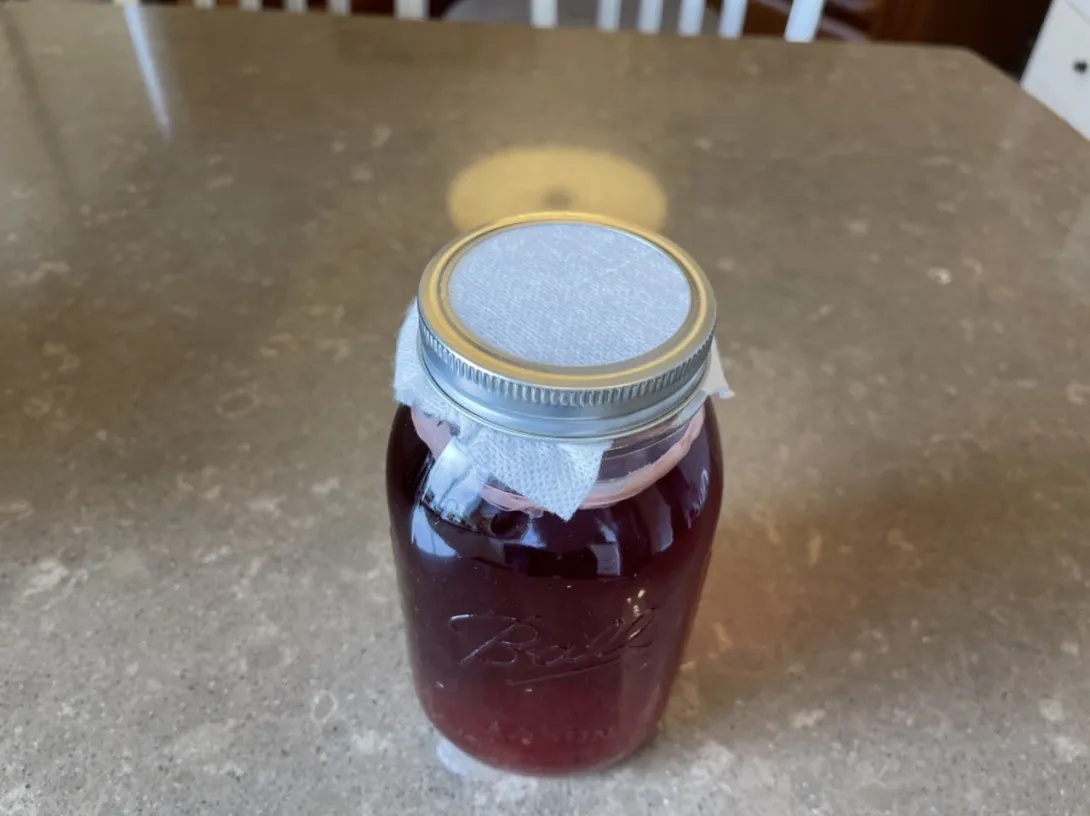
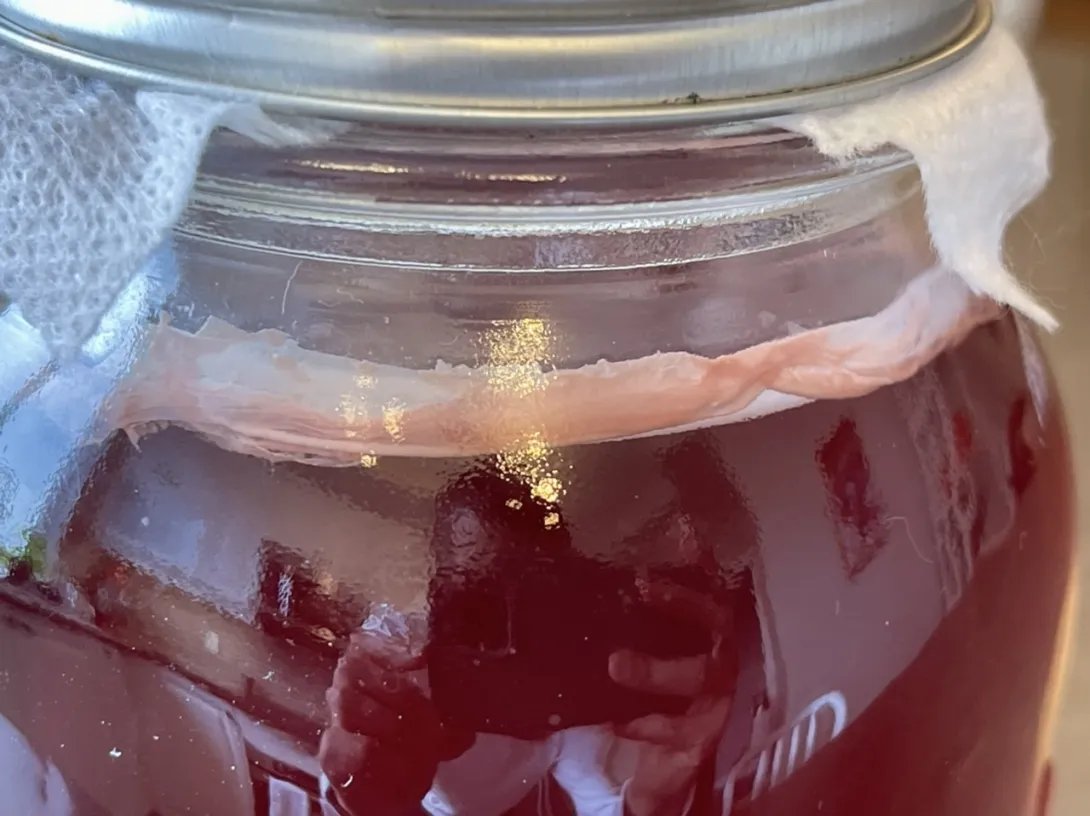
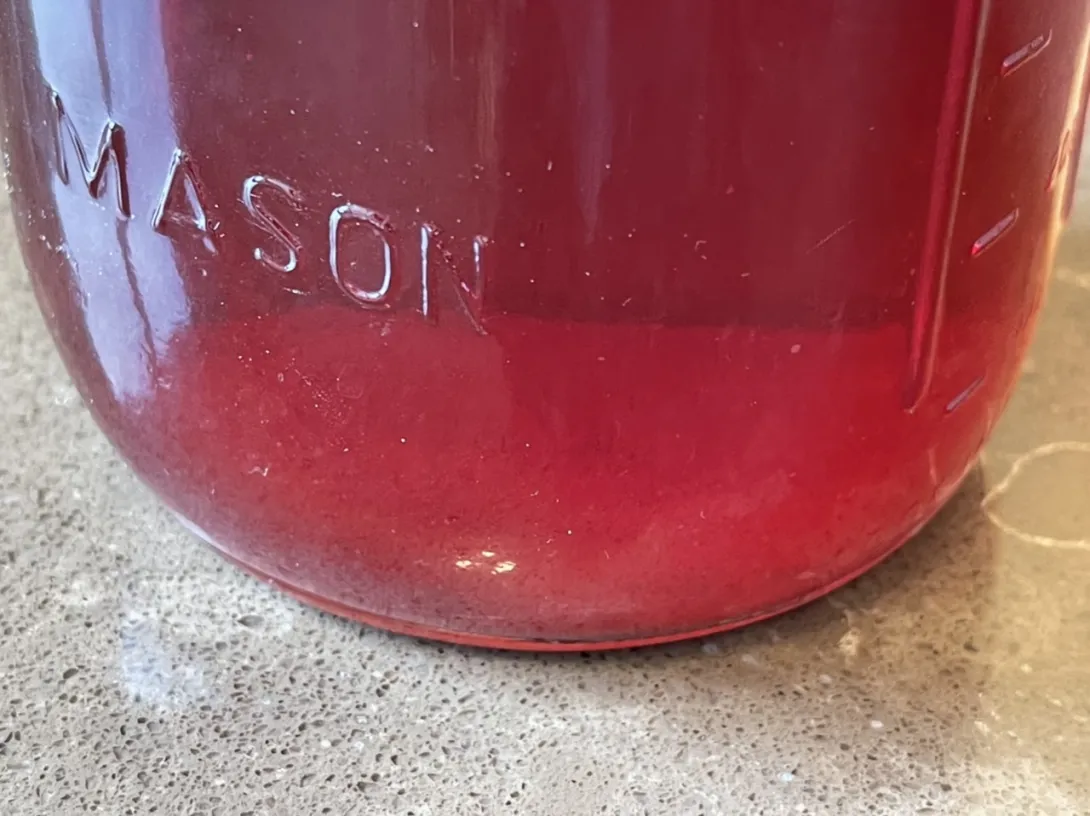
- Benito's Blog
- Log in or register to post comments
Benny,
I've had a jar of wine vinegar on my counter for a few years now. I haven't worried about sulfites or alcohol, and it still does just fine. I started it just like you did, with natural apple cider vinegar with the mother. After about 3 years the mother is ¼-inch thick, though it took a while to get there. In fact, the first batch took almost 8-10 months to fully ferment due, I think, to the small amount of mother in the cider vinegar. Now I will typically harvest about a liter every 4-6 months or so, and replenish it with an inexpensive bottle of (usually red) wine.
I got my guidelines from Mark Bittman's "How to Cook Everything," and he recommends using a 3 liter bottle and filling it only ⅔ full, presumably to help aerate the mixture. I'm not sure this makes total sense to me, but it has worked. The one thing that I do notice is that it is hard to tell when the vinegar is fully fermented. When I decant it into smaller bottles to give away, the vinegar is totally clear, but after a few weeks it tends to get cloudy again. I believe that it continues fermenting in the smaller bottles. I suppose a heat treatment will stop this from happening but I never bothered. It tastes just fine whether or not it is clear.
-Brad
Thanks for the info Brad. The wine I used probably had added sulfites, it was an inexpensive bottle we were given so I figured nothing to lose by trying other than the price of the apple cider vinegar. The fact that there is already a good amount of mother in the wine/vinegar obviously means it is working which is great. Once this is ready, whenever that will be, I’ll pour off about half or so and fill it back up with some new better wine to keep it going. It’s a fun little thing to do!
Hi Benny i have had a good play with Vinegar having a plentiful supply of wine from my cousins vineyard i have made both white and red vinegars as well as infused ones too.To bring down the alcohol content just water the wine down, or if its exposed to air it will loose some of it alcohol too. bringing to the boil if you want to retain the deep red is another way to reduce the alcohol.
i even used my home brew stout which fitted nicely with its alcohol content and makes a great malt vinegar. i even brewed a lemon beer for the express purpose of using it for vinegar. i do have a book "vinegar revival" by Harry Rosenblum ISBN976-0-451-49503-7 which i found quite useful. you might be able to request it at the library. I did have another vinegar book that i think i may have loaned but have probably now lost it was a paper back but very good!
Bragg' s apple cider vinegar is raw and unfiltered and as the label says with mother. In the Vinegar isle at the supermarket you will see there are vinegars that say unfiltered un pastuerized and you should be able to see a bit of crud in the bottom these are good starters too!
regards Derek
Hi Derek, thanks for the information. I will have a look at the library and see if they have that book. I’m pretty happy that this seems to be working with the apple cider vinegar that I purchased. Given the mother than has already formed in just two weeks I’d say I’ll have some vinegar of sorts to use in the next months. I figure that I’ll be able to remove half of the new red wine vinegar (actually it was a cheap dark rose) and keep half with the mother to start more red wine vinegar by adding the amount removed with new wine. This way I should be able to keep it going and not have to buy red wine vinegar anymore and hopefully make better red wine vinegar than I usually buy.
Benny
im told that some restaurants have a big vessel that left over wine (didnt know it existed) is poured into regularly and decanted when required for de glazing pans or in dishes.
Thanks for the book suggestion Derek, our library does have it and I’ve placed a hold on it.
Adam Ragusea made an interesting vinegar video where he used hydrogen peroxide to remove the sulphites from a bottle of wine:
https://youtu.be/pO-L9mo06CQ about 10:00 in.
Nice video Jon, thanks for sharing that. I’d read about using hydrogen peroxide to reduce the sulfites but didn’t have any at home so decided to skip that. From what Brad said and what I’m seeing with the wine I used, it doesn’t seem to be too great an issue when using the apple cider vinegar method. I do think that if you’re trying to start a wine vinegar naturally without seeding it in some fashion that the sulfites would probably be more likely to inhibit the Acetobacter needed so would need to do the hydrogen peroxide method.
Very nice! I would suggest to swirl the jar every couple days so the new forming mother can gently fall toward the bottom. Otherwise kahm, or, much worse, mold infection can happen
I guess swirling it would also help keep it oxygenated as well since this needs to be an aerobic reaction to convert the ethanol to acetic acid. Thanks Marta.
Benny
That is exactly right. I learned this lesson a hard way.
Hi Benny, when you get the book Vinegar Revival from the library page 12 the advice is the opposite the Mother should form on the surface its a slimy cellulose that is the product of good vinegar production and can be substantial its the natural formation byproduct of bacteria converting alcohol into acetic acid and is the intersection between the base liquid and the air. it should float and will occassionaly sink when Mother is being superseeded by her daughters. all part of the natural process doesn't look pretty or appetising but a good sign all is working well.
i agree that you dont want mold to form as this will spoil your vinegar, no different to sour dough cultures in that respect.
Derek
Thank you Derek, I have been swirling the vinegar and have tasted it so I have disturbed the surface thing. So I’d read somewhere that that is the mother, is that right? Another source called it the pedicule.
Benny
Thanks for posting this, Benny! I was under the impression this was a much more complicated process than it seems to be. You have sparked my interest and I am all about the ferments. Yours seems to have a lovely color at the moment, although I'm assuming this will change slightly over time. I have everything at hand needed to make some, so I will give this a go this weekend. Curious as to whether it is best/necessary to keep out of the sunlight? I hope you will keep us posted on how this process goes for you. Interesting post!
I’m glad my post has peaked your interest Leigh. I read about keeping it in the dark but I’m not sure why other than perhaps preventing it from getting too hot? I’ll be interested in how your vinegar turns out.
II’m reviving my grape yeast water now and thinking of making other fruit vinegars from it. We’ll see how active it is first.
To swirl or not to swirl? That is the question! Well, of course, you don't want to disrupt the forming mother. Usually, when you gently swirl the jar, it will just float down. If it doesn't, that's ok too, it will be just kind of washed by the liquid. At least, it is how I
Image
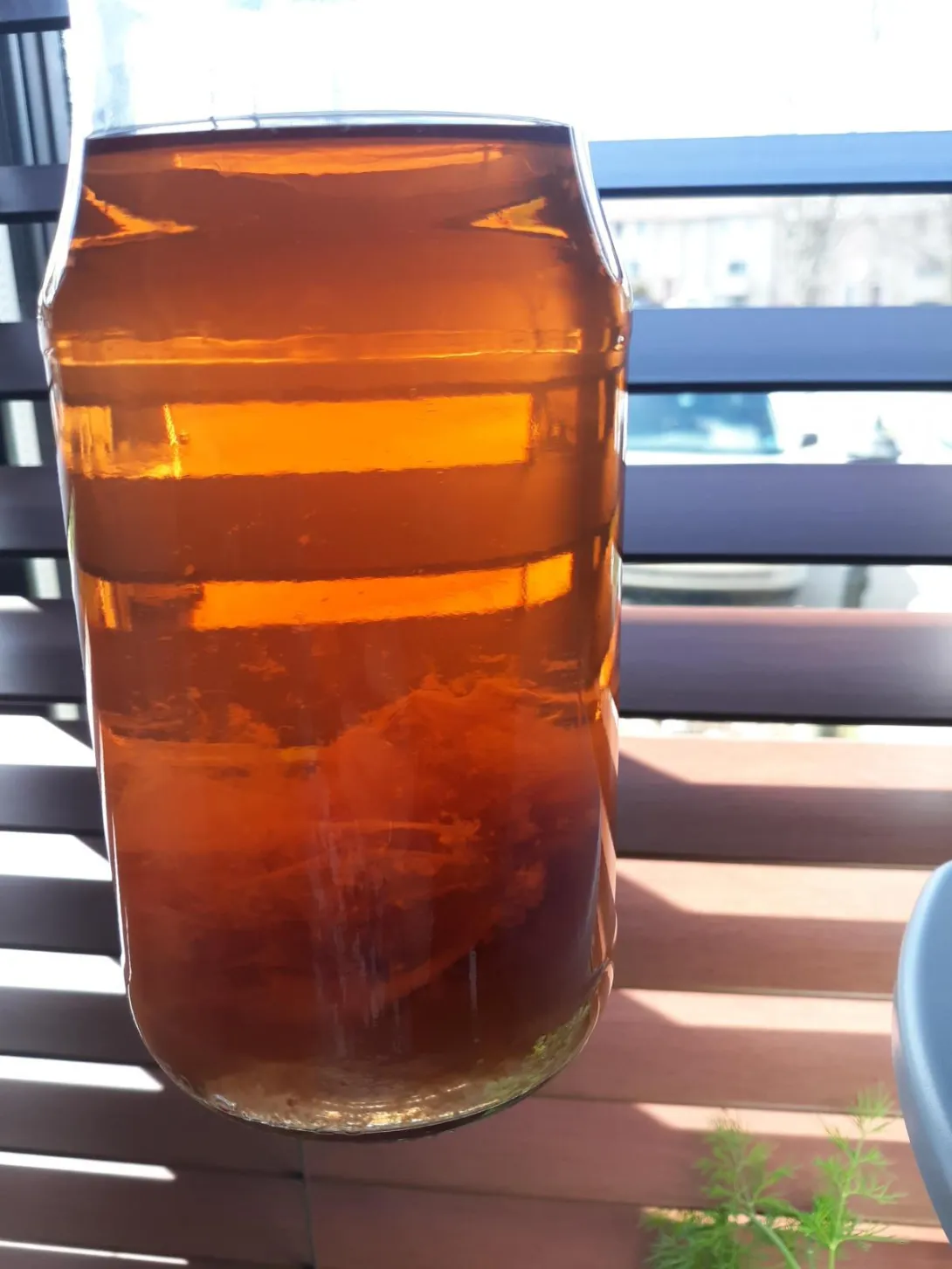
make it. This is my apple raspberry vinegar, at least 12 months old. All the mothers safly near the bottom. The next one is a malt vinegar in the making. I moved (swirled, rotated) the jar a little and the mother started to fall down, but still floats. The new mother will form soon
My swirling of the forming vinegar has disturbed the mother and most of it has settled to the bottom. But the Acetobacter must be in the fluid throughout and not just in the mother.
I’ll need to get more bottles, I love the idea of making vinegars with different flavour profiles from various fruit.
I’m interested in your malt vinegar Marta, what is the basis of it?
Benny
I feel responsible for disturbing your vinegar mother, so sorry! But it will grow back, you will see.
My malt vinegar is made from bread kvass. I save ends of all my dark rye breads and make bread kvas out if them. When the kvass goes too boozy or too acidic I just pour it into jar, inoculate with some living fruit vinegar and wait until it tastes nice. Sometimes I feed it a little with real beer or malt extract dissolved in water.
As you can see I don't do things by the book. I should be more careful with sharing my methods...
Anyway, nowadays I rarely buy apple cider vinegar anymore, homemade is much better
No reason to be sorry, it’s all good. I tasted my vinegar and it was already quite good if not quite all the way there yet. I’ve now moved it to my proofing box to speed things up. I’ve set it to 76°F which is much warmer than the spot I had it till now. I’m thinking of buying some raspberries and getting them fermenting with an inoculation of yeast water from my revived grape yeast water. I’d like to see if I can let it fully ferment and then turn into raspberry vinegar.
Benny
I’ve been reading a couple of fermentation books and I’m finding it all so fascinating.
Anyhow, I harvested the rose wine vinegar today, the pH reached a nice and low 2.78. From Vinegar Revival they said the target was 2.8. I suppose it was pretty fast because about ⅓ - ½ was the apple cider vinegar that got things started. It is indeed easy to do and the vinegar is far better than any store bought red wine vinegar that I’ve ever purchased.
I strained off most of the mother through a coffee filter and have it saved in the same jars I used to ferment the wine in. I’ll refrigerate them until I get another one started.
Now I mentioned my grape yeast water. So I got it nice and active again and decided it was a perfect situation to make another vinegar. Raspberry vinegar is next. So to a clean jar I added two containers of raspberries, inoculated it with several tbsp of the grape yeast water and topped it off with filtered water.
This is how it looked last evening.
Now this morning.
Image
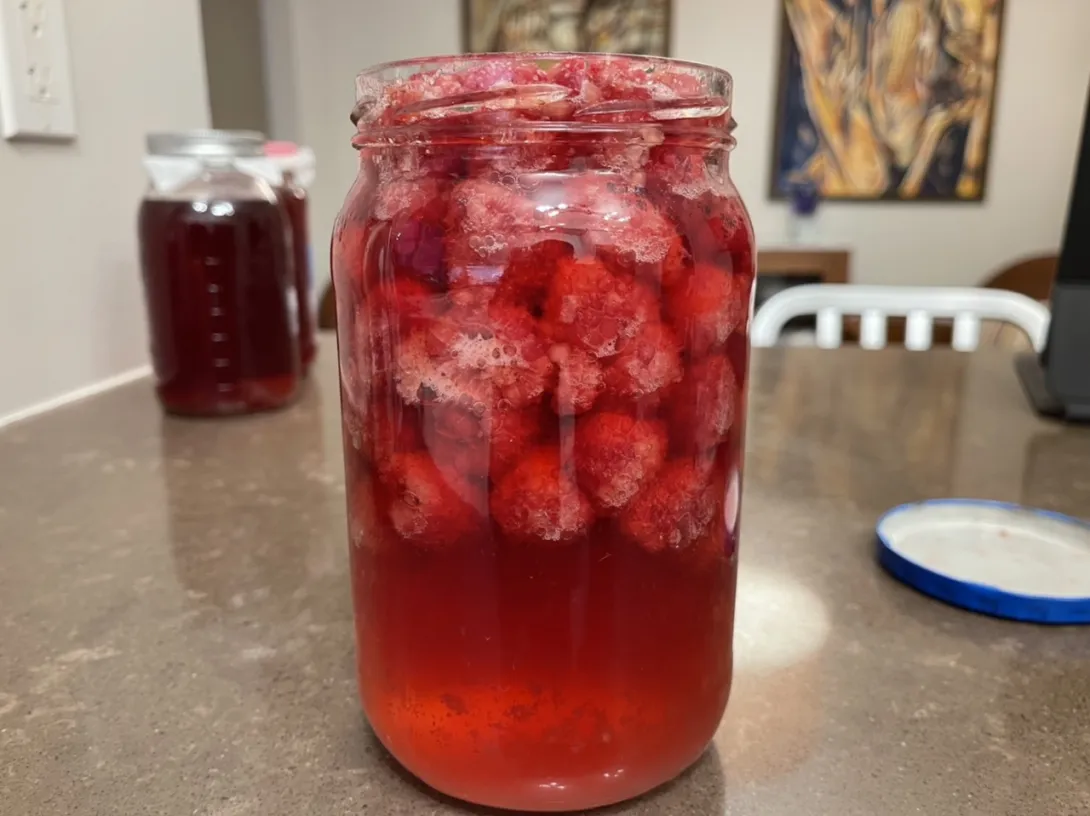
Image
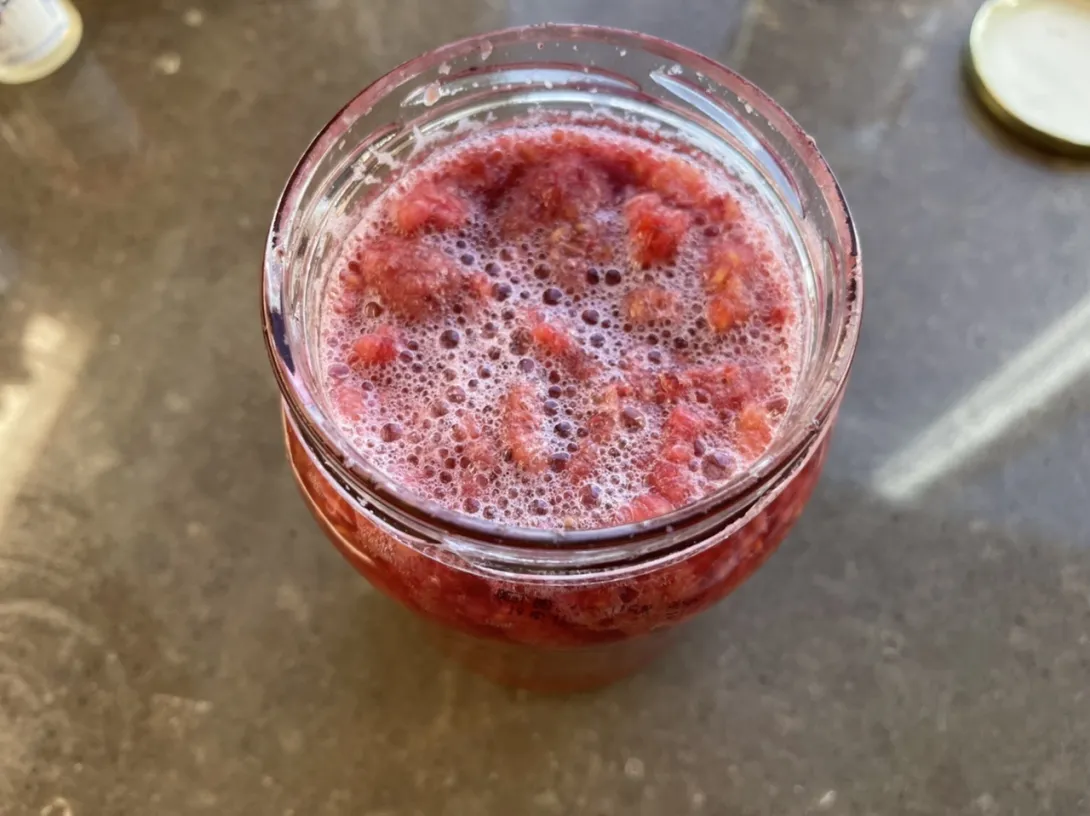
On advice from Abe, I’d added a few tbsp of sugar in order to try to get more ethanol produced from this than he thinks the raspberries could produce on their own. Once they stop fizzing I’ll either add some vinegar mother or just wait and see if nature can take its course and hope that the raspberries had enough Acetobacter on them to start spontaneously converting the ethanol to acetic acid.
Well my first ever vinegar is a success. I strained the vinegar through a coffee filter today to remove the mother and bottled the rose vinegar. It is quite a bit better than store bought red wine vinegar that I’ve had. I did a taste test and the homemade is much more complex while the store bought is much simpler and actually had a bit of a stale taste to it. Based on that success, I’ve started a red wine vinegar now. In order to reduce the alcohol below 9% I diluted the red wine using my new rose vinegar as process I believe is called back slopping. This also helps getting things started by transferring the Acetobacter from the newly made vinegar into the wine. I also transferred the vinegar mother to the jars as well. The wine’s pH was 3.6 and after adding my rose vinegar the pH was 3.1. The target pH is 2.8 or less. The first batch took about 3.5 weeks or so I expect this one to be about the same.
9 days into the fermentation of my batch of red wine vinegar which I started by putting the mother from the rose vinegar along with diluting it with a equal portion of the rose vinegar is now starting to form a mother on the surface. The pH has dropped a tiny bit from 3.1 to 3.09. So this is going well so far.